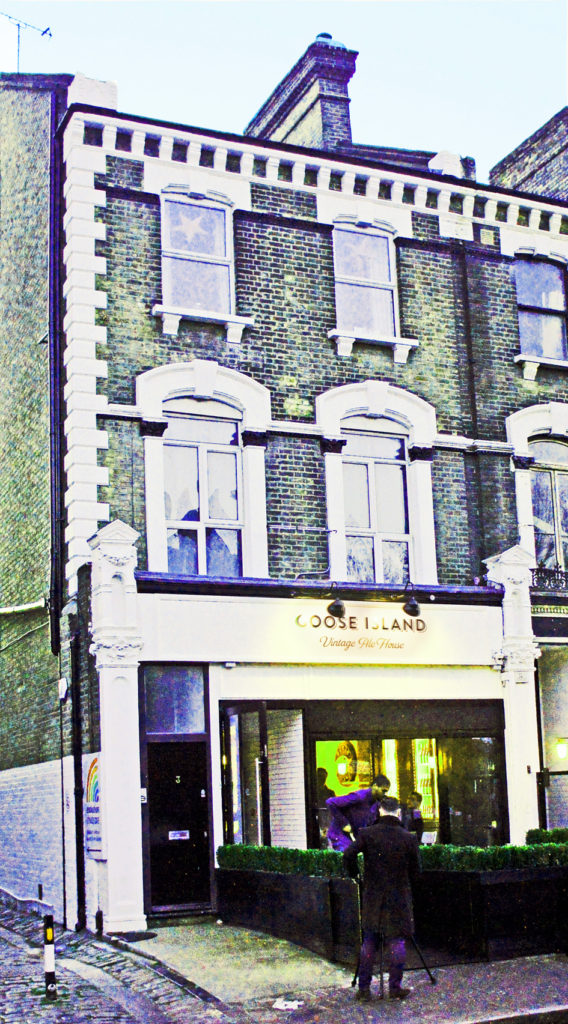
BAL-HAM, gateway, if the guys from Chicago’s Goose Island Beer Co are correct, to a new form of gastropub/craft beer bar: yummy grub combined with rare brews. The very first Goose Island Vintage Ale House had a goosedown-soft opening in a former Be At One cocktail bar in Ramsden Road, SW12 a week before Christmas, and ramped up the publicity last week with a “launch beer dinner” attended by Goose Island’s founder, John Hall, and president/general manager, Ken Stout. I would love to hope that they’re right: if there was just one bar like a Vintage Ale House per London borough, then the beer revolution would have ended in victory, and beer would be back at the heart of British gastronomy, from which it was brutally evicted in the 19th century.
It’s a big irony, of course, that John Hall took the idea of the British pub, and British beer, to Chicago after a tour of Europe back in the 1980s, turned his original Goose Island brewpub into one of the stars of the American brewing revival, and is now returning to the motherland with a take on the British pub that could revitalise the original concept. Ken Stout, in a simile he admits to have borrowed from someone else, compares it to the “British Invasion” of the 1960s, when groups such as the Rolling Stones and the Beatles took American music – the rhythm ’n’ blues of people like Muddy Waters and the country-influenced rock ’n’ roll of Arthur Alexander – back to the United States with their own twist on it, became a smash, and made music fans appreciate anew what they had. Now British beer fans are being taught to love the IPAs and heavyweight stouts their great-grandparents knew by American brewers who have reinvented these beers for the 21st century.
That analogy quickly falls over if you push it too hard, but it’s not totally wrong, and it has wider application than you might first think. The current Good Beer Guide lists more than 20 cask beers by British brewers called “American [something]”, another 20-plus that mention Cascade, the almost archetypal American “new” hop, in their names, and over a hundred IPAs, most, I’d give you short odds, inspired by American IPAs, that is, with big floral hop flavours. The American influence today on British cask beer is now undeniable – and let’s not even touch on the “craft keg” scene. So is Britain ready for what Goose Island says is the first dedicated exclusively American craft beer bar in the UK?
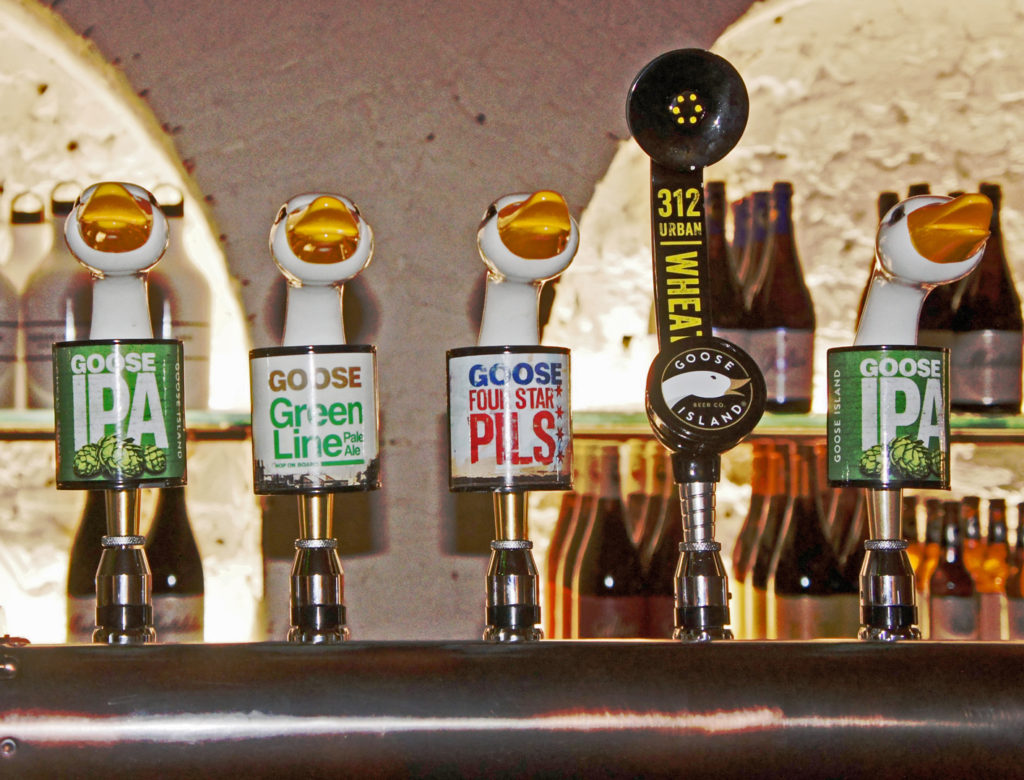 I’d love to believe so, because it provides a different and, I think, very good take on what a pub can be – and, actually, what a tied house can be. I’ve never felt having just one brewer’s products on sale has to be a barrier to complete customer satisfaction: choice is over-fetishised by beer geeks. What the Vintage Ale House offers is a place where beer, good beer, beer from a company that cares about beer, is absolutely central to the offer, but so too is good food – porter and molasses glazed beef cheeks, for example, enough to make any Hereford smile – that is designed to go with beer. Four Goose Island draught beers – IPA, Pils, Green Line pale ale and 312 Wheat – are available, but so are big 76.5cl bottles of the brewery’s seven different heavy-hitting barrel-aged Belgian-style ales, such as Sofie, a 6.5 per cent Saison, Matilda, a 7 per cent “Orval-alike” pale ale and Juliet, an 8 per cent Brett beer flavoured with blackberries. Other beers unique to the Vintage Ale House are promised, to maintain interest and bring people back. The vintage beers will hit you for between £18 and £23 a bottle, but that’s still (mostly) cheaper than the (limited) selection of wines, which start at £20 a bottle and climb to £35. At the same time, I am confident that if you like beer, you’ll love these beers in the context for which the originals styles were made: with food. If the Vintage Ale House finally encourages British pubs and bars to take beer and food pairing seriously as a core strategy John Hall should get a knighthood. I spotted Charlie McVeigh, boss of the small-but-expanding Draughthouse chain of gastropubs, at the launch, hopefully gathering some ideas, though since two of his ten pubs are in neighbouring SW11 he was probably mostly checking the new opposition: Draughthouse sells Goose Island beers.
I’d love to believe so, because it provides a different and, I think, very good take on what a pub can be – and, actually, what a tied house can be. I’ve never felt having just one brewer’s products on sale has to be a barrier to complete customer satisfaction: choice is over-fetishised by beer geeks. What the Vintage Ale House offers is a place where beer, good beer, beer from a company that cares about beer, is absolutely central to the offer, but so too is good food – porter and molasses glazed beef cheeks, for example, enough to make any Hereford smile – that is designed to go with beer. Four Goose Island draught beers – IPA, Pils, Green Line pale ale and 312 Wheat – are available, but so are big 76.5cl bottles of the brewery’s seven different heavy-hitting barrel-aged Belgian-style ales, such as Sofie, a 6.5 per cent Saison, Matilda, a 7 per cent “Orval-alike” pale ale and Juliet, an 8 per cent Brett beer flavoured with blackberries. Other beers unique to the Vintage Ale House are promised, to maintain interest and bring people back. The vintage beers will hit you for between £18 and £23 a bottle, but that’s still (mostly) cheaper than the (limited) selection of wines, which start at £20 a bottle and climb to £35. At the same time, I am confident that if you like beer, you’ll love these beers in the context for which the originals styles were made: with food. If the Vintage Ale House finally encourages British pubs and bars to take beer and food pairing seriously as a core strategy John Hall should get a knighthood. I spotted Charlie McVeigh, boss of the small-but-expanding Draughthouse chain of gastropubs, at the launch, hopefully gathering some ideas, though since two of his ten pubs are in neighbouring SW11 he was probably mostly checking the new opposition: Draughthouse sells Goose Island beers.
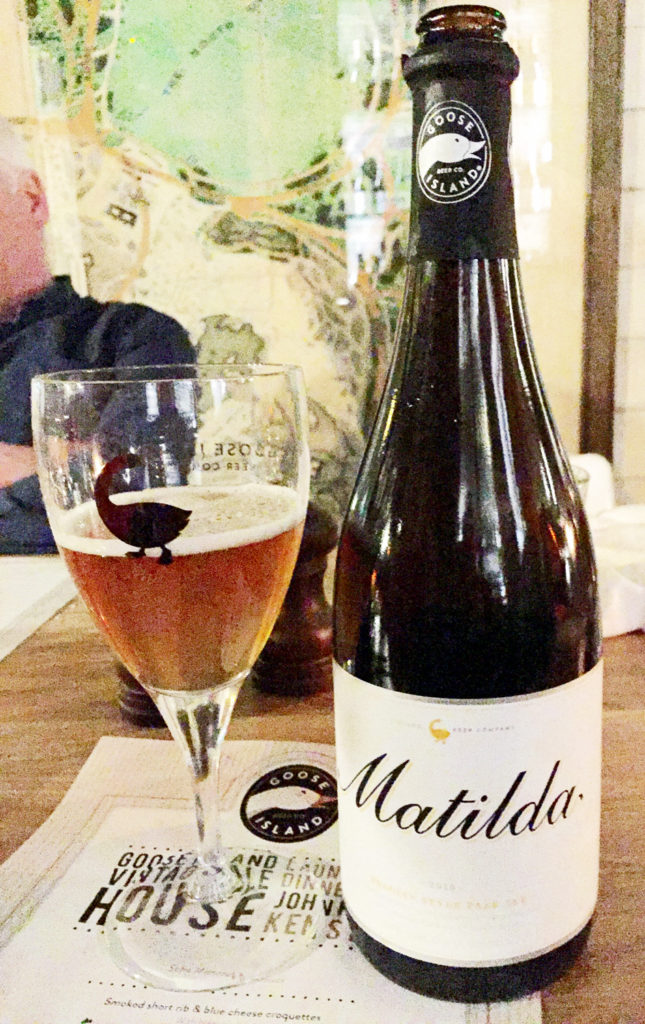
Why Balham and why now? Goose Island looked seriously at opening something like the Vintage Ale House back home in Chicago, 15 years ago, John Hall says. “We were going to call it a brasserie, and it was going to concentrate on our high end beers, so we could concentrate on them, and let people know that they’re quite a bit different from other beers, they’re more like wine, they’re great with food, they elevate the whole experience. We didn’t do it because we had so many things on our plate. Then we talked about it in the last year or so, and what better place than to come here to London and do it. It’s going to take us a while to really create what we want here, this is the first run at it, so it’s going to be some learning and everything. Right now we’re selling less of our high-end than we hope to in the future, but as the word gets out, we’re going to have people coming here to understand that this is a unique experience. We have a very unique portfolio, with more beers for different situations.”
You’ll not, of course, see any hints anywhere in the Vintage Ale House of Goose Island’s ultimate owner today, AB InBev, which acquired the company in 2011: but why should you? Does a Jaguar F-Type have a badge somewhere saying it was made by a company ultimately owned by Tata of India, manufacturer of buses and trucks? And if AB InBev’s ownership of Goose Island puts you off, would Tata’s ownership of Jaguar put you off owning an F-type?
So, anyway, will the Vintage Ale House succeed? Mmmm, ah, well, dunno. I’m not totally convinced that the location is the best: even if Wikipedia says Balham has an “increasingly professional middle class population”, its success will be as a “destination” venue, and I don’t know how much of a “destination” Balham will appear to be to the average under-40 London foodie who is, I suspect, the target market. The building, a converted Victorian house just off Balham High Road, provides a combined bar/dining area/kitchen that is long and narrow and certainly not large. And while I want to hope that Goose Island is pushing at an open door, I think the next opening of a Vintage Ale House, planned for Brussels in the summer, is likely to do better just because the Belgians already understand beer-and-food.
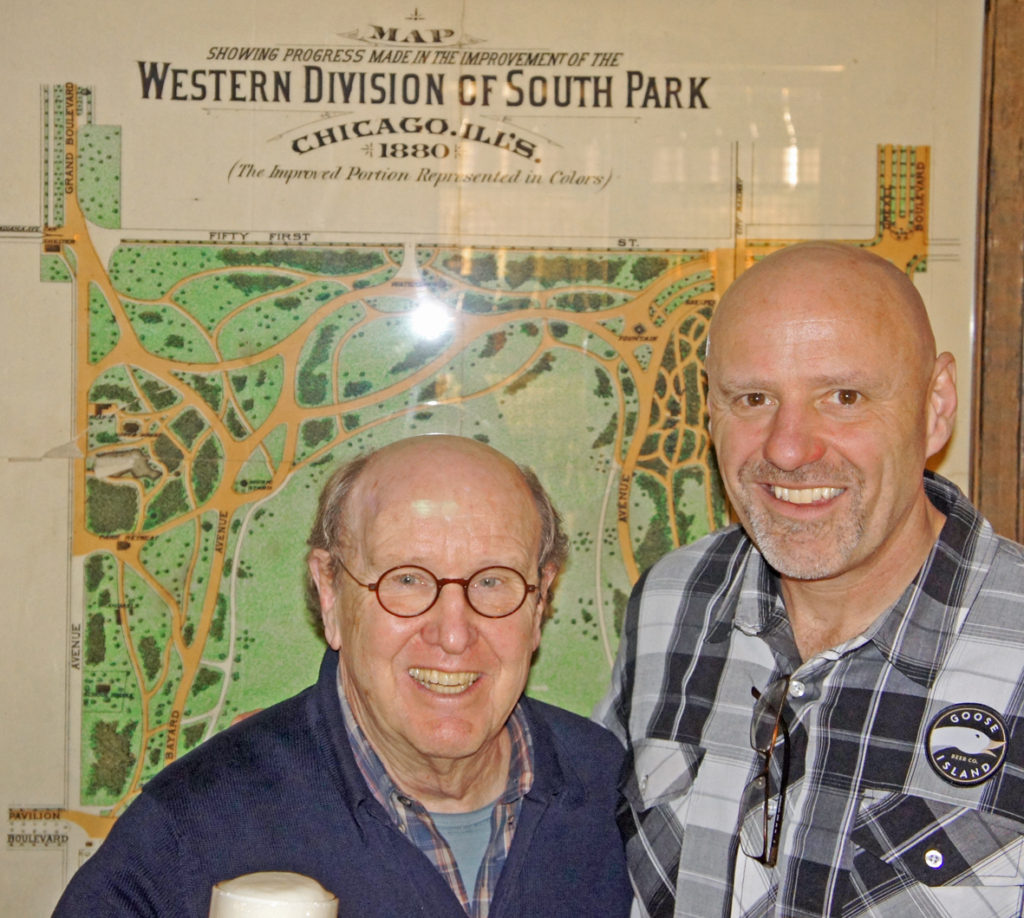
Still, I had a great time on Wednesday: loved the Sofie Mimosa cocktails on arrival, a mixture of orange juice, Grand Marnier and Sofie saison (rather than the traditional champagne), which had an impressive depth and heft, the character of the saison, which is part barrel-aged on orange peel, making this a rare (in my experience) cocktail to be talked about as you drink it. Most of my talking, though, was with John Hall and Ken Stout, whom I somehow managed to monopolise in the “interview” session before the dinner.
John admitted that he had “not remotely” foreseen when he started brewing English-style ales and German-style lagers in Chicago in 1988 that there would be a time when American beer styles would be the biggest world-wide influencers of what small brewers are producing, with American-style IPAs now made from Argentina to St Petersburg. His son Greg was the one who began experimenting, “not unlike the way chefs were”, and at the first Goose Island brewhouse they were brewing a new, different, experimental beer every week – 50 a year, “which was absolutely unheard-of, and using ten or 12 yeasts, which was also absolutely unheard-of.” When the Fulton Street brewery opened in 1995, the beers were Honkers Ale, IPA, a stout, a porter, and one lager. We were primarily an ale brewery.” The Belgian beers, starting with Matilda, followed soon after, and “we just started to add to it, as everybody else in the craft beer world did, but we were probably in the forefront for a lot of it.” Today Goose Island has three and a quarter acres of warehousing dedicated to its barrel ageing programme, equivalent to a block of land 125 yards square
He was, he says, “so heavily influenced by Michael Jackson – heavily influenced. He’s the one that probably gave me the passion, more than anything about it. More than once he would come over and we would sit down right in the pub, and he could recall every damned beer he ever drank. He had an extraordinary sensory ability, oh my goodness. What troubles me is that so many of the young brewers in the United States have no recollection and no knowledge of what Michael did in, for example, inventing and promoting the whole idea of beer styles.
The breakthrough in the UK came in 2001, when the late Glenn Payne, then beer buyer at the Safeway supermarket chain in Britain, “a wonderful, wonderful man”, rang John up “and said, ‘We like your beer over here.’ I’m going, ‘Are you kidding me?’ We sent the beer over, and one of the thrills I had was to come over and drink one of my IPAs here in England. I couldn’t have imagined that.”
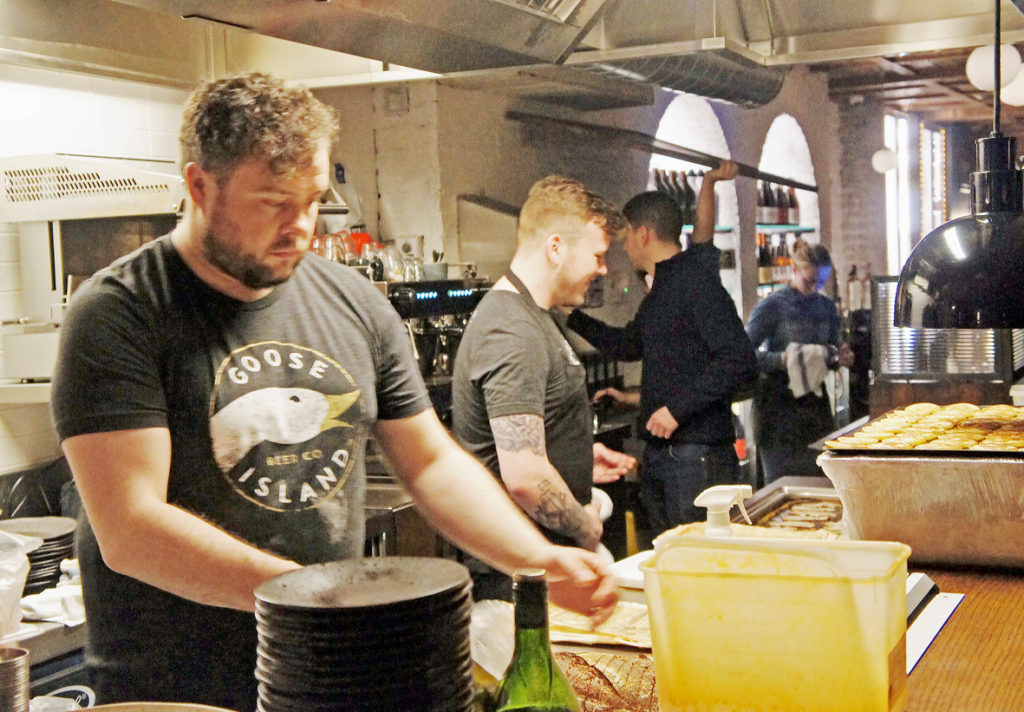
Ken Stout’s take on the growth of American influence on the global beer world is that American craft brewers “have taken the great beer styles of the Old World, and in some cases even resuscitated them, like porter, and put an American twist on them, riffed on them a little bit, and now we’re sending them back over, and the beer lovers of the UK and the rest of the world appreciate and enjoy what we’ve done to these beers.” Globally, he says, back-packers from around the world have come to the United States, explored the new beers they found there, and, just like John Hall did, returned to their homes and decided they want to reproduce the great beers they tasted overseas. “They see people running brewpubs, and they think, ‘People make a living doing this? How can I make a living doing this!’ There’s also something in the zeitgeist now, ‘Follow your heart, do something that moves you, that excites you.’ I think that feeds into it too.”
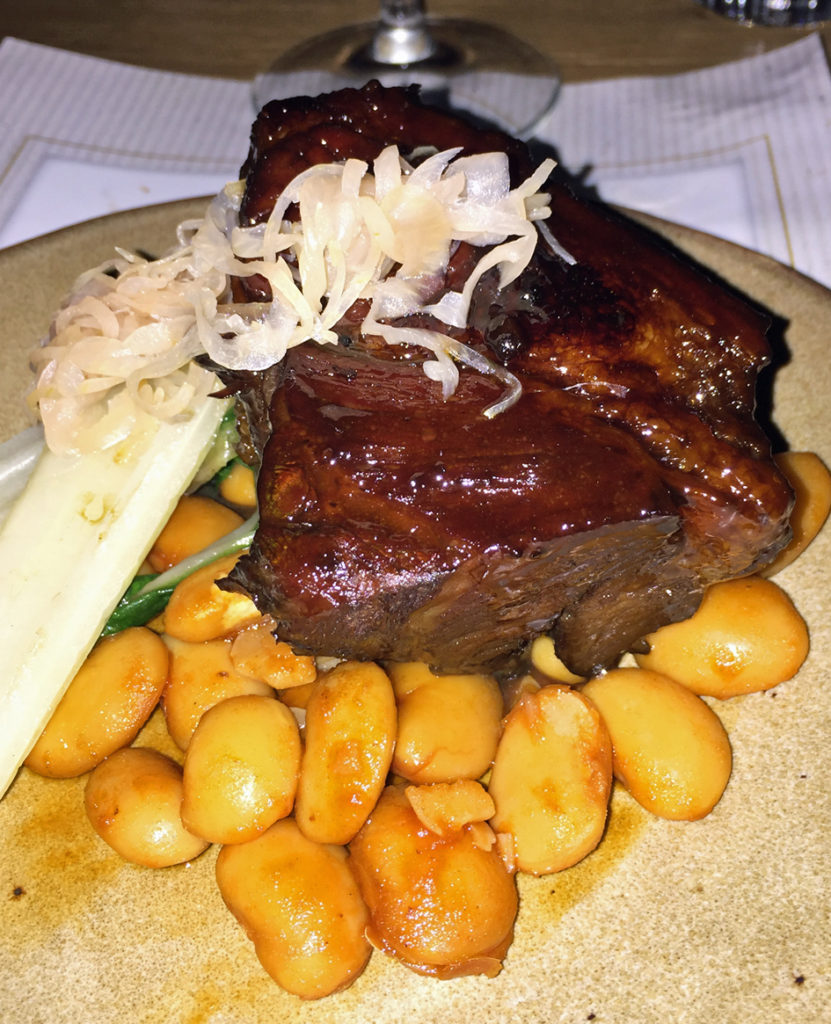
In terms of the global explosion in the numbers of breweries, we are, he says, merely returning to 19th-century levels of brewery numbers – and against a background of much larger populations. John adds that it is also far easier now to acquire kits of the right size for a small brewery: in the days when Goose Island was beginning, it was giant kit or nothing. Thus the growth of the market has brought a virtuous circle of more demand for brewing kit encouraging more brewing kit manufacturers, driving down prices and encouraging more demand for brewing kit. Saturation, he thinks, is still a long way ahead: there are, after all, still almost twice as many wineries in the United States as breweries. Ken Stout believes the US could eventually reach 12,000 breweries. All the same, he warns: “It’s not good enough to open a brewery that’s local and that’s small. If the beer isn’t great, you’re not going to make it. Drinkers have too many other choices.
“When John and I were growing up the beer landscape was very different, so the first beers we would have tried were maybe a Pabst or Schlitz, or maybe an Old Style in Chicago. The kids today, their first beer might be a Goose 312, or a New Belgian Fat Tire, or a Sam Adams Boston lager, or a Sierra Nevada pale ale. But it’s not just beer in the United States. The American palate has changed in the last 30 years, beer being a big part of it: but we’re back to more full-flavoured, higher cocoa-level chocolates in the United States, ice-creams, cheeses … my first cup of coffee was Maxwell House, or Fulgers, something thin and mass-produced, but now a kid’s first coffee is going to be from Starbucks. It’s not just the young kids. There’s some generational dynamic in play, but I’ll tell you, the over-40 crowd is absolutely into craft beer.”
And THAT, I think, is something we can’t say about the UK beer scene. But that’s something for another post …

“Ken Stout?” How strange. Brett Porter was their brewmaster for a while. If you change your last name to “Corn Ale,” there might be a place for you in the organization 😉
Indeed. One of the journos there was an old mate called John Porter, and stupidly I forgot to get a pic of Porter and Stout together
It’d be cool if the pub had Honkers on cask.
Honker used to be my favorite but I’ve not had one in a long while with explosion of local beer in my neck of the woods, the Ozarks of NW Arkansas and SW Missouri. I think it is time to get re-acquainted with an old friend.
It’s a great story but the sad part is that Goose Island’s beers aren’t that good by breakthrough USA standards, and ‘cascade’ (which is both a name of a hop and a malt confusingly) is now an ‘old school’, though respected, hop.
Conversly there are breweries here trying to emulate things past there, single hop Fuggles – an awfull attempt by Pelican followed a good one from HUB two years ago…
I’ve drunk gallons of Goose Island IPA as a late night beer when you don’t care how it tastes but it;s’s still decent – kind of beer. Maybe on draft – brewed locally – different water – a HUGE factor – it could be good.
It’s a kind of malt? Really never heard of that.
Actually I think that’s misinformation, or a misunderstanding, that I picked up from an Oregon brewer. I’ll check into it but unless I repost, assume it’s only a hop.